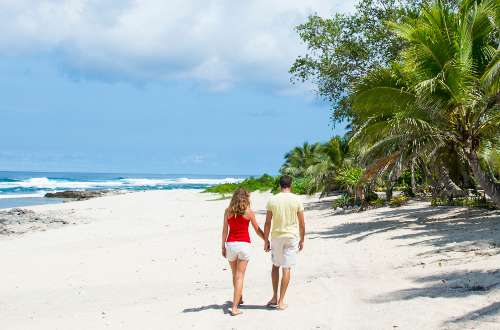
Richard Butler | Exclusive Report by SONAM LAMA HYOLMO of MONGABAY NEWS | 10TH SEPTEMBER, 2024
- In disaster-prone Vanuatu, Indigenous ni-Vanuatu people traditionally rely on plants and animal species as indicators that predict extreme weather events and help them prepare.
- But climate change is affecting weather patterns, and species’ behavior may impact the accuracy of this knowledge and predictions, elders say.
- Government, national organizations and scientists launched a national booklet and a mobile app to both document these traditional knowledge indicators and assess how climate change is impacting their accuracy.
- Researchers use a citizen science approach that encourages youth and community people’s hands-on participation in documenting species and changes.
Weeks before Category 5 Tropical Cyclone Harold loomed over the Vanuatu islands in 2020, Indigenous ni-Vanuatu people received nature’s warning call. Locals secured their thatched roofs and baked taro and laplap (a common delicacy) in an underground oven to stock up on food for the harsh weather.
For generations, the ni-Vanuatu relied on terrestrial and marine species like flowering plants, bees and turtles as indicators that forecast upcoming extreme weather events. This traditional knowledge helped communities adapt and prepare for floods, droughts and cyclones, like Harold, which scientists predict will be more frequent in this nation of islands.
“If the weather appeared fine in the middle of the cyclone, it indicated that winds would return with even more force,” one local told geographers assessing traditional knowledge in the region.
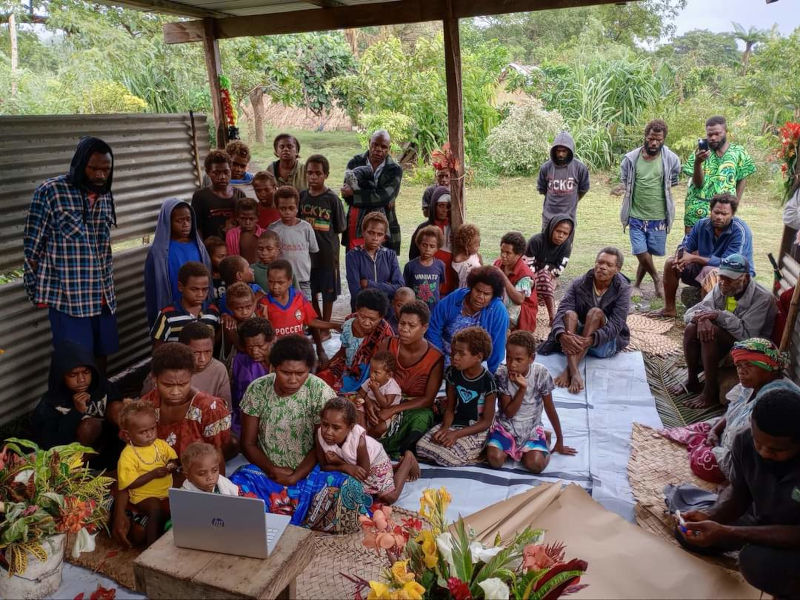
To revitalize this knowledge, the VanKIRAP project developed a national indicator booklet documenting an extensive list of traditional meteorological indicators. Led by the Secretariat of the Pacific Regional Environment Programme and Vanuatu Meteorology and Geo-Hazards Department (VMGD), researchers worked with traditional knowledge holders to preserve knowledge that is typically only orally passed down.
But in the face of climate change, which has affected weather patterns and species’ behavior, this knowledge is no longer as accurate as it used to, says VanKIRAP project manager Sunny Seuseu. From the team’s consultations with communities, elders report that some traditional indicators they applied in the past no longer work.
To analyze the accuracy of the traditional knowledge indicators and see if they have been impacted by climate change over the years, researchers developed an app alongside the booklet. Assessing these traditional indicators is the key to verifying their reliability, Seuseu tells Mongabay.
“To bridge this gap, we collaborated with the Vanuatu Meteorology and Geo-Hazards Department o develop the ClimateWatch mobile app, which is the first citizen science mobile app in the Pacific Islands region where traditional knowledge holds significance for extreme weather forecasting,” he says.
So far, there are 43 traditional climate knowledge indicator species recorded with the booklet and 20 with the app.
Traditional knowledge indicators collected via the ClimateWatch app are not used to predict extreme weather events, researchers say. Analysis is still underway and they don’t expect to come to a conclusion for the next few years.
Traditional knowledge losing accuracy?
According to ni-Vanuatu traditional knowledge holders, cyclones are predictable and will be intense when the yellow oriental paper wasp (Polistes olivaceus) nests at a lower height than usual. Authors of the booklet analyzing this knowledge say this could be because by nesting low, wasps reduce the chance of any damage to their nests from predicted strong winds like cyclones.
Likewise, traditional knowledge holders observe bird behavior. Experts say this makes sense: Birds are capable of using infrasound to perceive storms and cyclones up to 1,000 kilometers (621 miles) away, allowing them to avoid or seek safety from the events. For generations, the ni-Vanuatu say, cyclones are near when the Pacific emerald dove (Chalcophaps longirostris sandwichensis) lays eggs on the ground or colonies of flying fox (Pteropus sp.) fly at lower heights than usual or stop flying altogether.
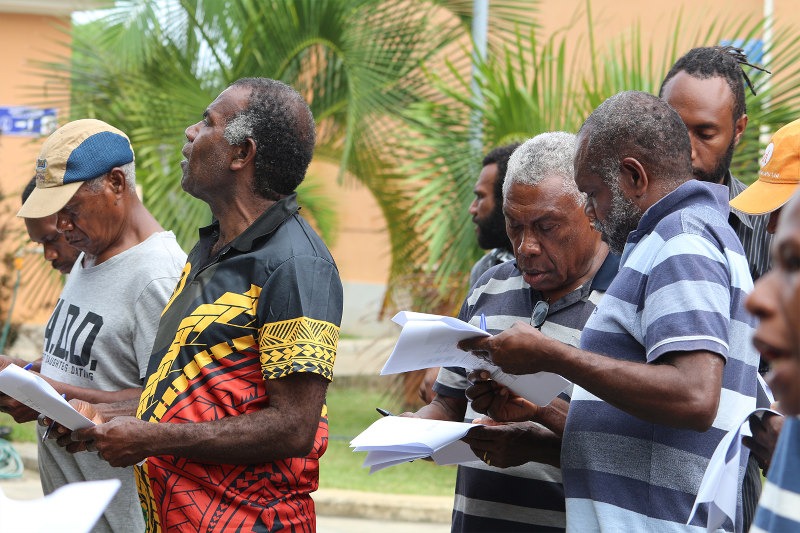
Their knowledge states the wet season between November and April is also more predictable when the kingfisher (Todiramphus farquhari) sings a lot or there’s a large presence of small bats (Miniopterus australis) flying at night. Rising temperatures and humidity reach their highest annual levels before the tropical wet season, which comes with intense rainstorms. This period of abrupt change in weather could trigger activity as a result of reproductive activity, the authors say. Cloud cover could make nights darker, which could also increase bat activity.
Ni-Vanuatu traditional knowledge holders say they can predict cyclones that occur during this wet season by fruit trees like breadfruit (Artocarpus altilis), mango (Mangifera indica) and papaya (Carica papaya) bearing many fruits and flowers. Warmer temperatures, especially rainfall, indeed is the primary influence on fruit growing faster and with higher yields.
But researchers are already seeing changes to the reliability of some of these indicators.
“For example, with climate change coming into effect, the fruiting seasons of the mango tree have shifted, which has also affected the trees as an indicator because they tend to fruit off-season,” says Glenda Pakoa, VMGD principal scientific officer.
At the moment, researchers are predicting how changing temperatures, rainfall, food availability, sea level and a host of climate change impacts will affect the traditional weather indicators. Temperature increase is likely to have a negative impact on the survival of the yellow oriental paper wasp, which the ni-Vanuatu use to assess the intensity of storms, they say. Rainfall changes may also change and confuse the timing of breeding for the Pacific emerald dove that lays its eggs on the ground before cyclones. Extreme heat can change the abundance of food and cause mass mortality for the flying fox, which typically increases activity during abrupt weather changes.
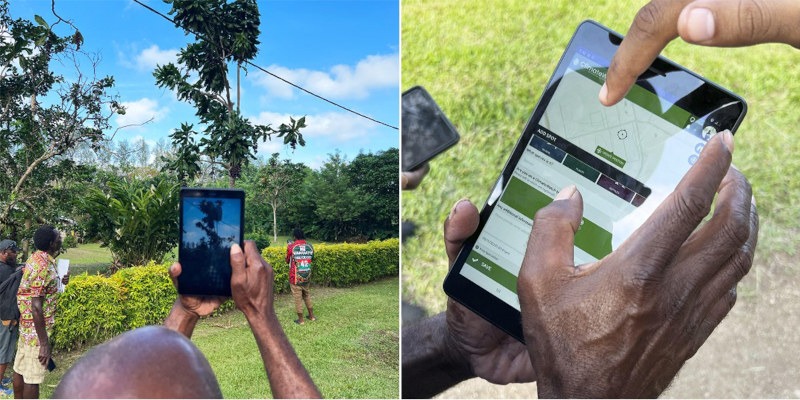
Seuseu of VanKIRAP says the use of traditional knowledge indicators is still very relevant and important, given that most of the population spread across remote islands has limited access to technological devices like phones and the internet. They rely on these indicators to foreshadow extreme weather and the need to prepare themselves and food supplies. Cyclone Pam, which hit Vanuatu in 2015, destroyed 96% of food crops, and the government worries future weather events will be more extreme.
But the reality of the changing climate and dependence on the indicators means the knowledge should be verified, he says.
Assessing the knowledge
As part of the project, smartphone users can access the climate app when they first identify the indicator species, record its location with an image, and answer a few brief questions to record the species data. The VMGD and its partner organizations receive and record the data to analyze how climate change affects the species through a database that tracks any changes to flowering times, breeding cycles and other periodic life cycle events for each indicator species.
“We will need years of data before we verify the indicators and analyze the shifts occurring by climate change. However, the process can help people be more prepared and resilient to extreme weather,” VMGD project manager Moirah Matou tells Mongabay.
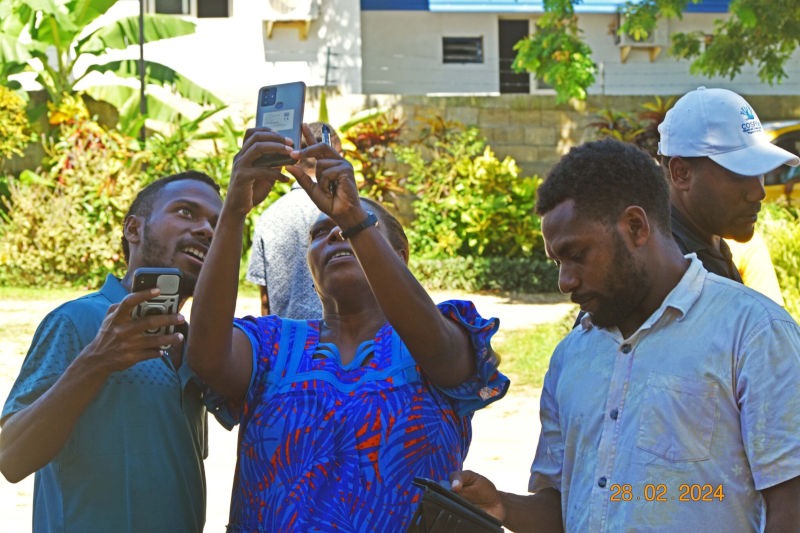
For the weather events expected within a few days, Pakoa says, traditional indicators are more likely to be accurate. But this accuracy may vary in predicting weather events that are likely to occur further into the future, in a few months or seasons.
For example, when hornets nest at a lower height, the traditional indicator is likely to remain accurate in predicting bad weather, as the cyclone may occur in the next few days, explains Pakoa. “However, mango and breadfruit trees bearing heavy fruits — indicating longer weather events like cyclones coming in a few months or in the next cyclone season — is what we are trying to verify,” she tells Mongabay.
As the app only records 20 traditional indicator species, the team plans on documenting more, Seuseu says.
And because the app currently focuses on urban areas, including the capital Port Vila, he says his team plans to extend outreach in all six community climate centers across the six provinces of Vanuatu. So far, more than 100 people have used the app since its launch in 2023.
“In these community climate centers, we have climate champions currently operating at the provincial level within the governments to collect traditional knowledge from their respective provinces and villages and using the app to collect those indicators,” he says.
But the biggest challenge is getting communities that live in remote areas, lack access to smartphones and often rely on these indicators to use the app. Pakoa says the project tries to incorporate these communities by collecting the data in person through the climate centers.

The project isn’t only a scientific endeavor, sources say. Since much of this knowledge is already lost, transferring and revitalizing it is an important element of the initiative. The app also sets out school lesson plans to teach primary and secondary school students.
“It is a way to encourage the young generation to learn this local wisdom and take it forward,” Pakoa says.

